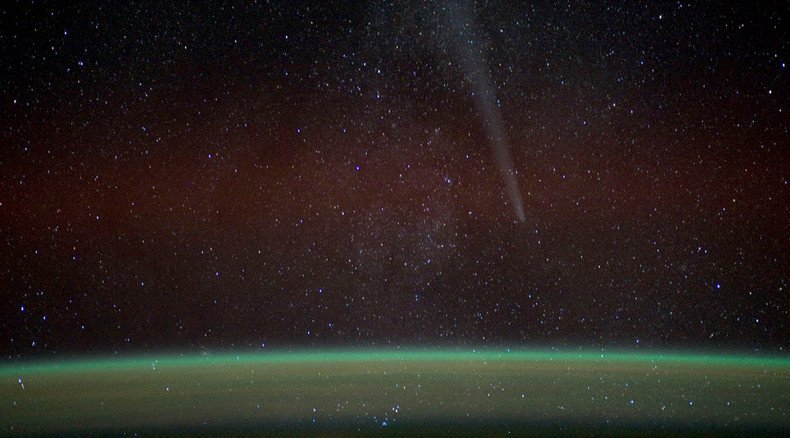Asteroid bar: Study shows comet releases ‘500 bottles of wine every second’

If life on comets was possible, Lovejoy would be a popular destination – scientists have found it releases alcohol and sugar in crazy amounts. But jokes aside, the finding is important as it backs the idea that comets could have seeded life on Earth.
This is the first discovery that has witnessed a comet releasing ethyl alcohol in such amounts – 500 bottles of wine every second.
“We found that comet Lovejoy was releasing as much alcohol as in at least 500 bottles of wine every second during its peak activity,” the paper’s lead author, Nicolas Biver of the Paris Observatory in France, said in a paper published October 23 in Science Advances.
READ MORE: Solar flyby: Daredevil comet circles sun, surprising astronomers
Researchers described finding 21 different organic molecules in the substances released by the comet, including ethyl alcohol, the same ingredient used in alcoholic drinks, and glycolaldehyde, sugar.
Some scientists strongly believe that comets, which are the frozen remains from the formation of our solar system, may have carried the molecules necessary for sparking life to Earth.
Happy hour on a comet? Large amounts of alcohol being released into space by comet Lovejoy: https://t.co/EXmoqKZSCnpic.twitter.com/9zp7o6RS3R
— NASA (@NASA) October 23, 2015This particular find was made possible as Comet Lovejoy (its formal name is C/2014 Q2) made its closest approach to the sun back on January 30. It is one of the brightest and also one of “the most active comets in Earth’s orbital neighborhood,” scientists said.
At the time, Lovejoy was releasing water at a rate of 20 tons per second, NASA said. Being relatively close to the sun caused the heated comet to release various gases, and scientists used the opportunity to figure out what kind of molecules they were composed of.
Home to extraterrestrials? Philae probe could be sitting on comet filled with alien life http://t.co/eVS5xGu19jpic.twitter.com/MDc7MgPrqW
— RT America (@RT_America) July 6, 2015The research team measured the microwave frequencies of each molecule, which glowed after being energized by the sunlight. Each type of molecule has its own unique frequency, which makes it possible to identify it.
“The result definitely promotes the idea the comets carry very complex chemistry,” a co-author of the paper, Stefanie Milam of NASA’s Goddard Space Flight Center in Greenbelt, Maryland, said.
“During the Late Heavy Bombardment about 3.8 billion years ago, when many comets and asteroids were blasting into Earth and we were getting our first oceans, life didn’t have to start with just simple molecules like water, carbon monoxide, and nitrogen. Instead, life had something that was much more sophisticated on a molecular level. We’re finding molecules with multiple carbon atoms. So now you can see where sugars start forming, as well as more complex organics such as amino acids – the building blocks of proteins – or nucleobases, the building blocks of DNA. These can start forming much easier than beginning with molecules with only two or three atoms,” Milam added.












